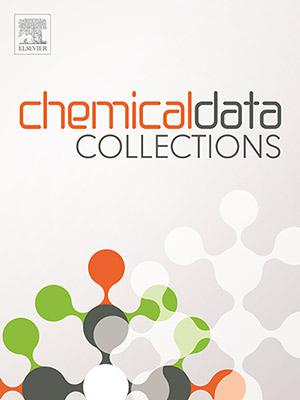Crystal structure of 3-methyl-2,6-diphenyl-1-(2-thiocyanatoacetyl)piperidin-4-one: A combined experimental and theoretical study
IF 2.7
Q2 Chemistry
引用次数: 0
Abstract
The structure of 3-methyl-2,6-diphenyl-1-(2-thiocyanatoacetyl)piperidin-4-one (3) was elucidated through single-crystal X-ray diffraction, revealing a distorted boat conformation of the piperidine ring. Phenyl and methyl groups occupy equatorial positions, with another phenyl group positioned axially. Molecular packing is stabilized by C–H⋯N, C–H⋯O and C–H⋯π interactions. DFT optimization at the B3LYP/6–311++G(d, p) level showed excellent agreement with experimental geometry, validating the model. HOMO-LUMO analysis revealed the electronic properties, while Mulliken charge and MEP identified reactivity and binding sites. Hirshfeld surface analysis quantified intermolecular interactions, highlighting H⋯H contacts (41.8 %), with energy framework analysis emphasizing dispersion forces. Docking studies with 3ERT protein demonstrated favorable interactions, supporting its anticancer potential. ADME predictions confirmed a suitable pharmacokinetic profile, underscoring its drug development potential. This study integrates crystallographic, computational, and biological evaluations showcasing the structural and therapeutic significance of the compound.

3-甲基-2,6-二苯基-1-(2-硫氰酸乙酰基)胡椒碱-4- 1晶体结构的实验与理论结合研究
通过单晶x射线衍射对3-甲基-2,6-二苯基-1-(2-硫氰酸乙酰基)哌啶-4- 1(3)的结构进行了解析,发现哌啶环呈扭曲的船形构象。苯基和甲基占据赤道位置,另一个苯基在轴向位置。分子堆积由C-H⋯N、C-H⋯O和C-H⋯π相互作用稳定。B3LYP/ 6-311 ++G(d, p)水平的DFT优化结果与实验几何形状吻合良好,验证了模型的正确性。HOMO-LUMO分析揭示了电子性质,Mulliken电荷和MEP分析确定了反应性和结合位点。Hirshfeld表面分析量化了分子间的相互作用,突出了H⋯H接触(41.8%),能量框架分析强调了色散力。与3ERT蛋白的对接研究显示了良好的相互作用,支持其抗癌潜力。ADME预测证实了合适的药代动力学特征,强调了其药物开发潜力。本研究综合了晶体学、计算学和生物学评价,展示了该化合物的结构和治疗意义。
本文章由计算机程序翻译,如有差异,请以英文原文为准。
求助全文
约1分钟内获得全文
求助全文
来源期刊

Chemical Data Collections
Chemistry-Chemistry (all)
CiteScore
6.10
自引率
0.00%
发文量
169
审稿时长
24 days
期刊介绍:
Chemical Data Collections (CDC) provides a publication outlet for the increasing need to make research material and data easy to share and re-use. Publication of research data with CDC will allow scientists to: -Make their data easy to find and access -Benefit from the fast publication process -Contribute to proper data citation and attribution -Publish their intermediate and null/negative results -Receive recognition for the work that does not fit traditional article format. The research data will be published as ''data articles'' that support fast and easy submission and quick peer-review processes. Data articles introduced by CDC are short self-contained publications about research materials and data. They must provide the scientific context of the described work and contain the following elements: a title, list of authors (plus affiliations), abstract, keywords, graphical abstract, metadata table, main text and at least three references. The journal welcomes submissions focusing on (but not limited to) the following categories of research output: spectral data, syntheses, crystallographic data, computational simulations, molecular dynamics and models, physicochemical data, etc.
 求助内容:
求助内容: 应助结果提醒方式:
应助结果提醒方式:


